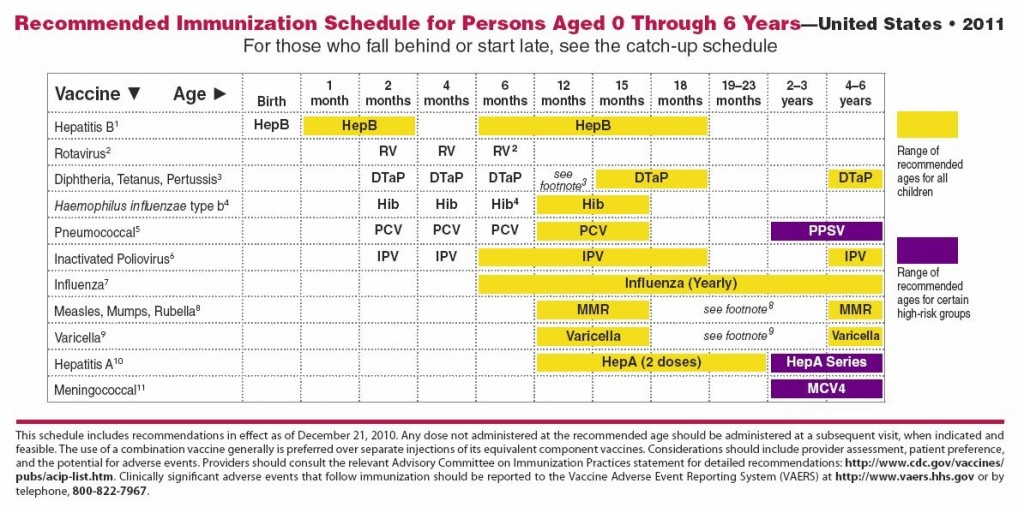 Leading up to the birth of our daughter, one of the major decisions that my wife and I discussed and researched at length was the immunization schedule that we would follow. Now let me be clear from the very start here…we are not anti-vaccine. Not even close. My wife is a nurse and I am an engineer and we definitely understand, respect, and value modern medicine. However, we were concerned with overwhelming our beautiful baby girl’s body with too many vaccine doses a little too quickly.
Leading up to the birth of our daughter, one of the major decisions that my wife and I discussed and researched at length was the immunization schedule that we would follow. Now let me be clear from the very start here…we are not anti-vaccine. Not even close. My wife is a nurse and I am an engineer and we definitely understand, respect, and value modern medicine. However, we were concerned with overwhelming our beautiful baby girl’s body with too many vaccine doses a little too quickly.
When it comes to immunizations, one area that gets a lot of press is the potential link to autism. Many autism activists claim that vaccinations cause autism. While scientific medical studies have pretty clearly discounted and ruled out any links between vaccines and autism, the press that it receives helped to raise our overall awareness and curiosity of the possible side effects of immunizations, as well as various other concerns and alternatives.
As such, we did a fair amount of research online, we spoke with friends and family that had similar questions, we spoke with our pediatrician, and we evaluated the various options that were generally accepted by the medical community. We discovered two options that we were comfortable with…follow the standard full vaccination schedule published by the American Academy of Pediatrics (AAP) or a modified full vaccination schedule that spread out the timing of injections. Ultimately, we decided to go with a modified schedule, and after careful consideration and consultation, we chose the schedule recommended by Dr. Bob Sears.
One of the main differences for the vaccination schedule from Dr. Bob is that it defers the Hepatitis A and Hepatitis B shots to age 2-1/2 to 3-1/2, rather than Day 1 (day of birth) and throughout years 1 and 2. While we do believe the Hepatitis shots are important for the long-term health of our daughter, we just did not feel that this was necessary at such a young age. If your child may be in a situation where the risk factors are higher (family member with Hep or living internationally), it may make sense to pull this back in.
Another key distinction is that the various shots and boosters are spread out over an increased number of visits. THIS MEANS YOU WILL NEED TO VISIT YOUR PEDIATRICIAN A LITTLE MORE OFTEN OVER YOUR CHILD’S FIRST YEAR. The necessary interim visits are usually just nurse visits, which allow you to get in and out fairly quickly, and usually do not require a visit charge/co-pay. If you think your job or your proximity to your pediatrician may make these extra visits difficult, then you will probably just want to stick with the AAP schedule. Reaching full immunization is critical to the long-term health and well-being of your child.
Here is the recommended schedule, as illustrated in The Vaccine Book, by Dr. Bob Sears. If you decide that this might be for you, please pick up his book at Amazon or borrow from your local public library.
.png)
For your reference, here is a look at the recommended immunization schedule as published by the AAP and CDC for 2011.

Please do your own research, talk things over with your pediatrician, and make the decision that is best for you and your family. Share your thoughts and feedback on this very important topic in the comments below and please let me know of you have any questions.



